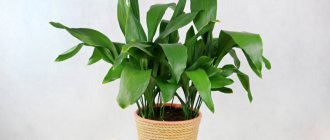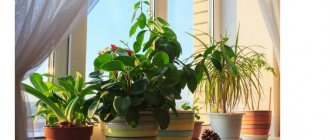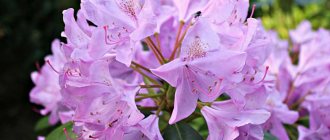Heather is a plant that easily tolerates both hot and cold weather. At the same time, in the cool season it is able to retain its decorative properties.
For growing in cold and even frosty conditions, select the simplest, non-elite varieties. The latter require shelter and will not tolerate wintering on an open balcony. Opt for a plant with a bright color, such as purple. Against the background of white snow, the contrast will be especially noticeable.
You can buy heather at any time of the year, but in autumn it is especially beautiful: from August to November the plant is covered with bright small flowers.
- House plants
7 popular plants that rarely survive at home
Chrysanthemum
Indoor chrysanthemums are beautiful and compact. They do not require special care and bloom for a long time. Chrysanthemums are cold-loving flowers that are not afraid of drafts and frosts. But they prefer frequent and abundant watering.
Since the flower is not demanding in terms of maintenance conditions, it can be placed in almost any corner of the apartment. The north, east or west side is best. If there are only southern windows, you need to place a flower pot at the back of the room. Chrysanthemum prefers diffused light. In summer you can place it on an open balcony or take it outside.
Chrysanthemum loves cold weather; if the room is too warm, the flower will drop its buds. It is very difficult to tolerate temperatures above +20 degrees. But it tolerates light frosts and cold easily. The optimal value for chrysanthemum is +10...+15 degrees. Therefore, before the onset of stable frosts, you can place the flower on the balcony or terrace.
Cactus
Any gardener knows that the most resilient indoor plants are cacti. They survive in almost any conditions: they can remain without water and without fertilizers for a long time. They just prefer a lot of sunlight. In such ferocious conditions, cacti will most likely not grow and bloom vigorously. But they definitely won’t die. For favorable life activity, they need to be watered with water at room temperature as the earthen clod dries out - rarely and generously. With the onset of winter, watering can be stopped.
Despite the fact that cacti are heat-loving plants, they are quite resistant to coolness and sudden temperature fluctuations. Plants feel great in winter, especially if the room temperature is kept at +6...+8 degrees.
How to make the right choice
The collection of low-maintenance indoor plants is quite extensive. Several criteria will help the future owner of a home greenhouse make a choice:
- Appearance. This option is the easiest, because every housewife knows her preferences. By studying floristic collections and catalogs, you can find out which indoor plants are considered low-maintenance.
- The owner of the apartment has allergic reactions. Particular attention is paid to flowering, unpretentious indoor plants. Before purchasing a sprout, you should carefully study not only the rules of care and maintenance of the flower plant, but also its properties. In particular, attention is paid to such factors as the development of skin irritation when juice gets in, the presence of allergies to related types of ornamental crops. The presence of seasonal hay fever on flowering crops is important. In such situations, preference should be given to plants that do not bloom or that delight their owners with beautiful inflorescences once a year.
- Location of window openings and their sizes. Some plants prefer active growth in shade or partial shade, while for some varieties sunlight is important.
- Ceiling height in the apartment. This criterion is important for choosing hanging plants. Fans of climbing crops must have sufficiently high ceilings and reliable fastenings, trellises, and nets.
- Location of heating devices, window transoms, ventilation systems.
Before buying a decorative flower, you should carefully familiarize yourself with its preferences in care, watering, and acceptable periods of leaving it without attention (in case of a business trip, vacation, hospital treatment).
Photos and names of unpretentious indoor plants can be found in reference books and collections of the main representatives of the flora.
Varieties
Among the unpretentious flowers there are species with beautiful leaves and even blooming ones. The main thing is to find something of your own in this diversity. Plants in this category can be used to create fashionable stylistic elements for home decoration.
Decorative foliage
Perennials that delight their owners with a rich green crown. It consists of leaves of various shapes and colors. These plants do not bloom at all or the flowers are so inconspicuous that they are torn off. This way the plant will not waste its energy on the process.
Palms and large species
In the apartment they remind you of southern summer and relaxing to the sound of waves on the seashore. The palm tree will fit perfectly into a large room with a sufficient ceiling height. This plant is characterized by the presence of one growing point at the crown. Palm trees are not picky about care, the only thing is that they do not like frequent ventilation and open windows in the apartment. It is better to replant and buy a palm tree in spring and summer so that it is better accustomed to new living conditions.
Climbing shade-tolerant
This category primarily includes vines. They can diversify the interior, for example, decorate the walls or even disguise a defect in the wallpaper, use a stand to play around a corner, or entwine a decorative element. Lianas are unpretentious and easily live in the climate of urban high-rise buildings.
Geranium
The plant is famous for its unpretentiousness. With a minimum of care it blooms profusely and for a long time. Geraniums need a cool, but not cold environment, and diffused light.
There is no need to place the planting in a draft, nor next to a heating radiator. It cannot stand the heat and may become ill and begin to shed its leaves. The best temperature is 22-27 °C in summer, 12-16 in winter. During the cold season, the flower is at rest.
Fuchsia
Fuchsia has cute flowers that look like they are dressed in bright outfits. The plant loves a cool climate, diffused light, rational watering, moist air and responds gratefully to fertilizing and showering. The most suitable place for placing fuchsia would be an open balcony on the east or north-west side. Or a terrace and garden, where there is shelter from direct sunlight and a large flow of fresh air.
It is important to organize the correct conditions for wintering for fuchsia. A bright room with a temperature of +5...+7 degrees is perfect. Then the flower will retain all its foliage. After all, the growth, development and condition of the flower itself depend on good conditions. Fuchsia is allowed to be in a dark cellar, but without leaves. If this is not possible and the flower will spend the winter in a warm place, then in the spring you need to prune it. It is recommended even a little earlier - in mid-February.
Camellia
A plant with graceful inflorescences of red, pink or white. Combines tenderness and fragility. The maintenance and care of the flower should be considered in advance. For the successful cultivation of an evergreen beauty, it is important to create conditions for it that are as close as possible to those in which the shrub grows in nature. The ideal place in the apartment would be a glassed-in loggia with a continuous flow of fresh air. On the windowsill above the radiator, the flower will die.
Streptocarpus
Colorful bells of one of the closest to living bouquets of indoor plants, streptocarpus, appear only if the neat, lush bushes are moved into the cool from November. The optimal temperature value for the dormant period of this plant is from +12 to +14 degrees, with careful bottom watering without waterlogging.
Streptocarpus. © Shirley
Criteria for choosing plants that will safely survive the winter on the balcony
You need to choose winter plants for the balcony based on the climate zone, the location of the balcony (north, west, south or east), and the temperature conditions on the balcony.
Each type of plant has its own preferences:
- Citrus fruits overwinter well on a glazed balcony facing south or east with a temperature not lower than +7°C.
- Cacti are very resistant to both overheating and frost. They feel the same on both northern and southern windowsills. Most tolerate +5°C. There are varieties that are resistant even to -10°C.
- Bush plants laurel, geranium, chrysanthemum, hydrangea adapt to temperatures of +5°C. Even the western side, where there is enough evening sun, is suitable for them.
- Camellias are decorations for any balcony. They are thermophilic and will require an eastern or southern location at temperatures from 0 to 15°C.
- Coniferous cypresses, thujas, cryptomerias are year-round inhabitants of the balcony. It is best to overwinter at +6°C.
In this case, it is necessary to take into account the needs of each type of plant and provide proper care.











